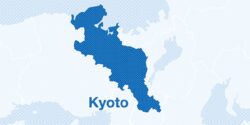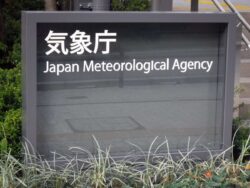
Fresh fish are displayed at a fish wholesale market in Wakkanai, Hokkaido, in January.
14:54 JST, June 12, 2024
The nation’s seafood consumption has fallen to the lowest level on record, with annual per capita consumption dropping from 40.2 kilograms in fiscal 2001 to 22 kilograms in fiscal 2022, according to a white paper from the Agriculture, Forestry and Fisheries Ministry.
The government approved the white paper for fiscal 2023 on per capita consumption of seafood at a Cabinet meeting on Tuesday.
People have been consuming less seafood since the peak in 2001. Meat consumption, however, has been on the rise and in fiscal 2022 reached 34 kilograms per person.
The agriculture ministry has indicated a need to promote the benefits of eating fish and shellfish.
Purchases of fresh seafood are also on a downward trend, falling to 6,368 grams in 2023, about half the 12,920 grams purchased in 2004.
According to the ministry’s survey, the most common reason for buying more meat and less seafood, with multiple answers allowed, was “family members want meat” at 45.9%, followed by “seafood is more expensive” at 42.1%, and “fish is difficult to cook” at 38%.
The fishing industry is also facing a labor shortage and an ageing workforce.
In 2022, there were 123,100 people employed in the industry, about half the 238,300 who were employed in 2003. The percentage of such workers aged 65 or older has remained high at 37.7%, and there were only 1,691 new workers in fiscal 2022.
As to why there is a labor shortage, the white paper says that children from households engaged in fishing do not always join the industry because of the unstable income and diversifying values about life and work.
The white paper notes that “there are many people from urban areas who are interested in the fishing industry,” and stresses the importance of efforts to secure new workers for the future.
"Society" POPULAR ARTICLE
-

M4.9 Earthquake Hits Tokyo, Neighboring Prefectures
-

Israeli Tourists Refused Accommodation at Hotel in Japan’s Nagano Pref., Prompting Protest by Israeli Embassy and Probe by Prefecture
-

M7.5 Earthquake Hits Northern Japan; Tsunami Waves Observed in Hokkaido, Aomori and Iwate Prefectures
-

Tsukiji Market Urges Tourists to Avoid Visiting in Year-End
-

High School in Kyoto Says Students Shoplifted during Recent School Trip to Bali, Indonesia
JN ACCESS RANKING
-

Tokyo Economic Security Forum to Hold Inaugural Meeting Amid Tense Global Environment
-

Keidanren Chairman Yoshinobu Tsutsui Visits Kashiwazaki-Kariwa Nuclear Power Plant; Inspects New Emergency Safety System
-

Imports of Rare Earths from China Facing Delays, May Be Caused by Deterioration of Japan-China Relations
-

University of Tokyo Professor Discusses Japanese Economic Security in Interview Ahead of Forum
-

Japan Pulls out of Vietnam Nuclear Project, Complicating Hanoi’s Power Plans























